
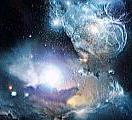





 Complex Adaptive
Systems consist of a large number of mutually interacting and
interwoven parts and agents. Examples are neural and social networks, nervous and
immune systems, ancient and modern cultures, languages, economies and
ecologies, galaxies and hurricanes.. The name Complex Adaptive System (CAS)
was coined by researchers at the Santa Fe Institute,
for example Murray Gell-Mann, John Holland and others. In general, it refers to the same
systems that can be simulated and described by Multi-Agent Systems (MAS).
Complex Adaptive
Systems consist of a large number of mutually interacting and
interwoven parts and agents. Examples are neural and social networks, nervous and
immune systems, ancient and modern cultures, languages, economies and
ecologies, galaxies and hurricanes.. The name Complex Adaptive System (CAS)
was coined by researchers at the Santa Fe Institute,
for example Murray Gell-Mann, John Holland and others. In general, it refers to the same
systems that can be simulated and described by Multi-Agent Systems (MAS). The Santa Fe Institute (SFI) has done pioneering work in the interdisciplinary field of complexity. The term "complex adaptive systems" was coined here, by John H. Holland and the other famous researchers of the SFI. An amazing property of many complex systems is the appearance of similar global features and structures in completely different systems, for example in hurricanes and galaxies. A Galaxy has a diameter of many thousand light years, whereas a typical Hurricane is a few hundred miles wide. Yet their complicated spiral structure looks very similar, and even the "eye" in a hurricane corresponds to the black hole in the core of a galaxy. Here we have an example of an emergent property. Emergent processes, properties, dynamics, and patterns are responsible for the appearance of similar global features and structures in completely different systems. Emergence is besides adaptation a major characteristic feature of many complex, social and self-organizing systems.
A system has high complexity or is very complex, if it can be represented efficiently by different models at different scales. The overall complexity is determined by the number of levels on which structures can be found, and it depends on the complexity of these structures and their interactions. If a system can be represented by the same models at different scales, or if it has scale independent or scale free properties, it is often a fractal or a self-similar system. Self-similarity is a basic property of fractals. We find often similar properties in complex systems and their components, for example in cells and organisms
- in all living organisms which are subject to evolution
- in all evolving complex adaptive systems which have a long history
- in systems that have grown over a long period of time
Another interesting question is if there is there a drive to systems of increasing complexity in evolution. Do systems and agents which are subject to evolution become automatically more and more complex ? At least we live in a part of the universe which is much more complex than the rest. Without doubt, life on earth has become more and more complex during the last billion years. Are catastrophes and mass extinctions good or bad for evolution, and what is their role in history ?
Some of the many unsolved and interesting questions about these systems are for example : How does complexity emerge in complex systems ? Why isn't the universe just a turbulent mess of particles tumbling around each other ? Why did the big bang not form a simple gas of particles, or condense into one big crystal ? How can the universe start with a big explosion and end up with life, history, and culture ?
If you find this questions interesting, take a look at our blog and our wiki. Both will be supplemented in the near future by a social network for people interested in science, complex systems, and complexity.







 Complexity
emerges for example from the clash of opposite forces -
this seems to be a basic principle in general, similar to the
Yin and Yang in Chinese philosophy which describe
a unity of opposites - and is therefore characterized by..
Complexity
emerges for example from the clash of opposite forces -
this seems to be a basic principle in general, similar to the
Yin and Yang in Chinese philosophy which describe
a unity of opposites - and is therefore characterized by..
- consonance in dissonance,
- dissimilarity in similarity,
- regularity in irregularity,
- identity in change,
- innovation in conservation,
- generation in stagnation,
- autonomy in dependency,
- isolation in intimacy,
- integrity in disparity,
- order in chaos,
- simplicity in intricacy and
- unity in diversity.
Chaos and complexity generally emerge trough a repeated combination of
- differentiation and integration
- variation and selection (Evolution)
- stretching and folding (Physics, attractor)
- potentiation/exponentiation and congruence class creation (Cryptology)
- dissipation and concentration (Living systems)
- activation and inhibition (Self-Organizing systems)
- expansion and gravitation (Cosmology, Galaxies/Clusters)
- radiation pressure and gravitational force (Fusion in Stars)
- build-up/fusion and break-down/dispersion (Supernovae)
- restlessness and restriction (Psychology, "Flow activities")
- specialization and cooperation (Sociology, Division of Labor)
- divergence/polarization and convergence (Politics, see Axelrod's
"Dissemination" Model)
- separation and recombination, splitting and merging of ...
- ... Code and Data (Programming Languages)
- ... Genetic Code (Biology)
- ... Exons and Introns (Molecular Biology)
- ... Firms, Companies (Economy)
- ... Countries and Cultures (Politics, see Axelrod's "Tribute" Model)
Melting Pots of different cultures, for example the ancient city of Alexandria (Ancient Egypt) and modern New York (America) are well known for their achievements, diversity and knowledge. America is like Ancient Egypt a country of immigrants and a big melting pot. Both countries have or had the most advanced civilization, culture and technology of their time. You maybe doubt that the american culture is really so far ahead, but you must admit that English is at least the world language and the current language of science, which has replaced Latin as the language of science in the middle ages.
 Beauty.
Do opposites attract or do people look for
partners similar to themselves? Have you ever
wondered how it is possible to code something
as attractiveness in the genes, if it is mainly
based on perception and pattern matching?
Is beauty just a perfect, flawless shape? How
do we recognize perfection then? Why is it
this form and not another which lets us feel good?
It seems nearly impossible to encode the attractiveness
of a complex human body in a few genes. Our genes
are not that different from the mouse and ape genes.
And yet all animals recognize the most attractive
mates with instinctive surenesss.
Beauty.
Do opposites attract or do people look for
partners similar to themselves? Have you ever
wondered how it is possible to code something
as attractiveness in the genes, if it is mainly
based on perception and pattern matching?
Is beauty just a perfect, flawless shape? How
do we recognize perfection then? Why is it
this form and not another which lets us feel good?
It seems nearly impossible to encode the attractiveness
of a complex human body in a few genes. Our genes
are not that different from the mouse and ape genes.
And yet all animals recognize the most attractive
mates with instinctive surenesss.  Average faces
look attractive, because by calculating average proportions unpleasant
asymmetries, irregularities and other flaws become levelled out,
and wrinkles and pimples gradually disappear.
In their average the beautiful faces are excellent.
Therefore one could say we like the excellent in the average.
Yet likes and tastes are very different from person to person.
Feedback process may play an important role:
if we like someone or something then we may get rewards
in form of positive feelings from it, and the more
good feelings we have in turn about something, the
more we like it. A positive feedback loop arises.
Average faces
look attractive, because by calculating average proportions unpleasant
asymmetries, irregularities and other flaws become levelled out,
and wrinkles and pimples gradually disappear.
In their average the beautiful faces are excellent.
Therefore one could say we like the excellent in the average.
Yet likes and tastes are very different from person to person.
Feedback process may play an important role:
if we like someone or something then we may get rewards
in form of positive feelings from it, and the more
good feelings we have in turn about something, the
more we like it. A positive feedback loop arises. But what triggers the loop in the first place? Perhaps it is a mixture of similarity and dissimilarity which plays an important role: it is the dissimilarity in the similarity which we find attractive in general. We are attracted by
- the dissimilar in the similar,
- by the unfamiliar in the familiar,
- by the novel in the well-known,
- by the excellent in the average.
Science. Science progresses as a result of the clash between theory and experiment, between speculation and measurement. The right balance between freedom and obligation is also necessary for science : a scientist has the freedom of discovering new things with free, unrestricted research, but he has the obligation to publish his results. A scientist usually takes several publications, which he names in the bibliography, and merges them to a new publication. He splits each publication into relevant and irrelevant parts, and recombines the different fragments to a new work. By interweaving and interlocking the different threads of knowledge, the scientist creates a new thread of insight and information. It may become a part of common knowledge, if it is accepted by the scientifc community. Science is a shared knowledge based on a common understanding.
In the same way, by splitting/isolating and melting/merging of muscial voices, motives and themes, composers interweave the threads of musical voices, motives and themes to a complex pattern of music. Poets merge and separate different verse lines through rhymes, they combine different styles and stories to a new style or story. So complexity arises in science, music and literature through the process of interweaving and interlocking by..
- melting and isolating/extracting of ..
- ... Threads of Knowledge (Science)
- ... Muscial Voices, Motives and Themes (Classical Music)
- ... Verse lines, Styles, Story Threads (Classical Literatue)

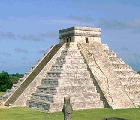




 Scale free
structures and distributions. A characteristic property of complex
adaptive systems is their scale-free structure, which is created by
continuous growth and evolution. For
example the wealth distribution of countries, companies and universities
is scale-free. Some countries like the USA and the european countries are
very rich, but the majority of countries is extremely poor. Most Europeans
are surprised by the amount of poverty if they visit Africa for the first
time. Similarly, the distribution of fame and familiarity of actors,
stars, politicians and researchers is scale free. A few politicians and
researchers are really famous and successful, but most of them are unknown
and unsuccessful.
Scale free
structures and distributions. A characteristic property of complex
adaptive systems is their scale-free structure, which is created by
continuous growth and evolution. For
example the wealth distribution of countries, companies and universities
is scale-free. Some countries like the USA and the european countries are
very rich, but the majority of countries is extremely poor. Most Europeans
are surprised by the amount of poverty if they visit Africa for the first
time. Similarly, the distribution of fame and familiarity of actors,
stars, politicians and researchers is scale free. A few politicians and
researchers are really famous and successful, but most of them are unknown
and unsuccessful.  Life and
Evolution. Life is the major source of complexity on earth. Without
life, our planet would look as dead as the moon or as friendly as the
mars. The theory of evolution by natural selection alone does not predict
that organisms will get more complex. Yet they do, and from the first
cells to organisms, plants and animals, evolution caused an exponential
growth in complexity (see for example John Maynard Smith and Eörs
Szathmáry and their small but great boook "the origins of life - from the
birth of life to the origins of language", Oxford University Press, 1999).
A list about the major integrative Levels of Evolution, posted in the
group, can be found here "Levels
of Evolution"
Life and
Evolution. Life is the major source of complexity on earth. Without
life, our planet would look as dead as the moon or as friendly as the
mars. The theory of evolution by natural selection alone does not predict
that organisms will get more complex. Yet they do, and from the first
cells to organisms, plants and animals, evolution caused an exponential
growth in complexity (see for example John Maynard Smith and Eörs
Szathmáry and their small but great boook "the origins of life - from the
birth of life to the origins of language", Oxford University Press, 1999).
A list about the major integrative Levels of Evolution, posted in the
group, can be found here "Levels
of Evolution" 


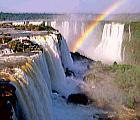

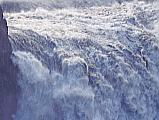
 Catastrophes. Humans seek to
prevent catastrophes, technological and natural ones. Since ancient times,
we fear the powerful forces of nature.
Lightnings are frightening and dangerous,
impacts of coments are even more deadly and could
easily kill millions or billions of people.
Yet lightnings and comets have played an important
role for the development of life on earth:
most of the water on earth probably originates
from a huge number of small comet impacts over
millions of years.
Catastrophes. Humans seek to
prevent catastrophes, technological and natural ones. Since ancient times,
we fear the powerful forces of nature.
Lightnings are frightening and dangerous,
impacts of coments are even more deadly and could
easily kill millions or billions of people.
Yet lightnings and comets have played an important
role for the development of life on earth:
most of the water on earth probably originates
from a huge number of small comet impacts over
millions of years.Existence of water was the condition for life on the early earth. Another condition of higher life-forms is oxygen. Animals need oxygen to survive, to break down food and release the energy they need to live. But the oxygen in the atmosphere was not produced with the intention of making an animal friendly environment. The final 21% level of oxygen in the atmosphere was the result of the first major pollution crisis - an environmental catastrophy.
But Microorganisms are not the only things influencing the composition of the atmosphere. Lightning bolts are with 28.000 degree Celsius more than five times as hot as the surface of the sun. Only a fraction of all lightnings in thunder storms reach the ground, 90% of all lightnings have no contact with it. They literally burn the air on their way down to earth or in the cloud, and produce nitrogen oxides (NOx) and ozone. Nitrogen oxides are an important fertilizer for plants, and the ozone shield in the stratosphere protects the earth from harmful ultraviolet radiation.
The greatest catastrophe for every living being and every single person is death. Although it is the source of the strongest fears and sufferings, it is necessary for the evolution of a species as a whole. No evolution would be possible without death.
No stellar evolution would be possible without the death of stars. Probably the ulimate and greatest catastrophe - the tremendous explosion of a supernova - is the most powerful generator of complexity. Elements heavier than iron are only formed in supernova explosions. And they are distributed by them at the same time. Supernovae enable the Build-up and fusion of heavy elements, and they disperse the results accross the universe.
Without lightnings, comets and other catastrophes there would be no life on earth. It seems likeley, that disasters and catastrophes enabled life in the first place, that they are the food for (complex) adaptive systems.
 Species which have specialised themselves too much to
certain ecological niches became unflexible. Catastrophes
can increase the complexity in the fitness landscape
through large impacts separated by long time periods,
increasing the fitness of more intelligent and flexible
species on the long run.
The dramatic change in the fitness landscape and the
end of the Dinosaurs was the chance and the possibility
for the mammals to conquer the earth. The advantage of
the mammals was small size, higher flexibility and enhanced
intelligence.
Only the mammals were adaptive, smart and intelligent
enough to survive the cruel conditions after the impact.
Species which have specialised themselves too much to
certain ecological niches became unflexible. Catastrophes
can increase the complexity in the fitness landscape
through large impacts separated by long time periods,
increasing the fitness of more intelligent and flexible
species on the long run.
The dramatic change in the fitness landscape and the
end of the Dinosaurs was the chance and the possibility
for the mammals to conquer the earth. The advantage of
the mammals was small size, higher flexibility and enhanced
intelligence.
Only the mammals were adaptive, smart and intelligent
enough to survive the cruel conditions after the impact. H.G. Wells said in the "The Time Machine" : "Intellectual versatility is the compensation for change, danger, and trouble [..] There is no intelligence where there is no change and no need of change."
Another need of change was the Ice Age. The disastrous and dramatic climatic change during the Ice Age was the catalyst for the development of language and better tools. But if the earth had frozen entirely during an ice age, perhaps we would not exist at all, as Stephen Jay Gould says : "We are here because one odd group of fishes had a peculiar fin anatomy that could transform into legs for terrestrial creatures; because the earth never froze entirely during an ice age; because a small and tenuous species, arising in Africa a quarter of a million years ago, has managed, so far, to survive by hook and by crook. We may yearn for a 'higher' answer-but none exists."


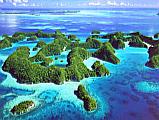



 Books and
Journals. Most of the good early books about complexity or complex adaptive
systems have something to do with agent-based modelling (ABM) in social science,
or with the Santa Fe Institute (SFI) and
it's famous researchers : Stuart Kauffman, Murray Gell-Mann, John H. Holland and Chris
Langton. The history of the SFI is described in M. Mitchell Waldrop's
interesting book "Complexity". Of the many excellent books published by
the SFI I want to name for example
Books and
Journals. Most of the good early books about complexity or complex adaptive
systems have something to do with agent-based modelling (ABM) in social science,
or with the Santa Fe Institute (SFI) and
it's famous researchers : Stuart Kauffman, Murray Gell-Mann, John H. Holland and Chris
Langton. The history of the SFI is described in M. Mitchell Waldrop's
interesting book "Complexity". Of the many excellent books published by
the SFI I want to name for example The Mind, The Brain, and Complex Adaptive Systems,
ed. by Harold J. Morowitz, Jerome L. Singer,
Santa Fe Institute - Studies in the Sciences of Complexity
Addison-Wesley, 1995
Introduction to the theory of neural computation,
John Hertz, Anders Krogh and Richard Palmer,
Santa Fe Institute - Studies in the Sciences of Complexity
Addison-Wesley, 1991
Other good books are :
The Complexity of Cooperation:
Agent-Based Models of Competition and Collaboration,
Robert Axelrod,
Princeton University Press, 1997
Axelrod's models are simple. But, as Axelrod remarks, the complexity should be in the results, not in the model itself. The simplicity of his models is their beauty. He explains with simple models the emergence of complex abstract terms like power and culture. His Dissemination Model explains the Emergence of Culture through local convergence and global polarization. With his Tribute Model (for "Building Political Actors") he captures the essential properties of power and explains the Origin of Nations/Empires. It is a worthy successor of his classic book "Evolution of Cooperation". At first sight too simple, but in fact a brilliant work.
More recommendable books:
Emergence: Contemporary Readings in Philosophy and Science,
Mark A. Bedau and Paul Humphreys (Eds.),
MIT Press, 2007
Roger Lewin,
University of Chicago Press, 2000
Early Civilizations,
Bruce G. Trigger,
The American University in Cairo Press, 1993
Origins of the modern mind,
Merlin Donald,
Harvard University Press, 1993
The origins of life - from the birth of life to the origins of language
John Maynard Smith and Eörs Szathmáry
Oxford University Press, 1999
How Nature works,
Per Bak,
Springer-Verlag, 1996
Complexity and Evolution,
Max Pettersson,
Cambridge Univ. Press, 1996
Generative Social Science: Studies in
Agent Based Computational Modeling
Joshua M. Epstein
Princeton University Press, 2007
Complex Adaptive Systems: An Introduction
to Computational Models of Social Life,
John H. Miller & Scott E. Page
Princeton University Press, 2007
 Mailing Lists. The
"Complexity Digest" is a good mailing list about complexity, which can be
found at http://www.comdig.org/
Mailing Lists. The
"Complexity Digest" is a good mailing list about complexity, which can be
found at http://www.comdig.org/The FRIAM (Friday Morning Complexity Coffee Group) mailing list, a list of the RedFish Group, is always a source of useful ideas and informations.


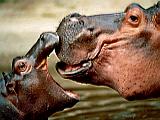
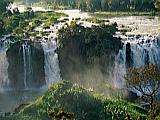


 Groups and Institutes. International research groups
and institutes exploring complex systems:
Groups and Institutes. International research groups
and institutes exploring complex systems:
- SFI Santa Fe Institute
- CSCS Center for the Study of Complex Systems
- CCSR Center for Complex Systems Research
- CASOS Center for Comp. Analysis of Social and Org. Systems
- ICES Institute for Complex Engineered Systems
- NECSI New England Complex Systems Institute
- NICO Northwestern Institute on Complex Systems
- ECCO Evolution, Complexity and Cognition group
 Wikis and websites. A few new wikis and old websites
on the principles of complex systems (including self-organization, swarm intelligence, emergence, adaptation,
feedback, frozen accidents, path dependence and evolution, ...)
Wikis and websites. A few new wikis and old websites
on the principles of complex systems (including self-organization, swarm intelligence, emergence, adaptation,
feedback, frozen accidents, path dependence and evolution, ...)
- NECSI Complex Systems Wiki
- Shalizi's Notebooks
- Prinzipia Cybernetica
- CALRESCO Complexity & Artificial Life Research Concept for Self-Organizing Systems
- InterSci Complexity wiki
- The SwarmWiki, a resource for agent- and individual-based modelers
- and of course our own CAS Wiki
